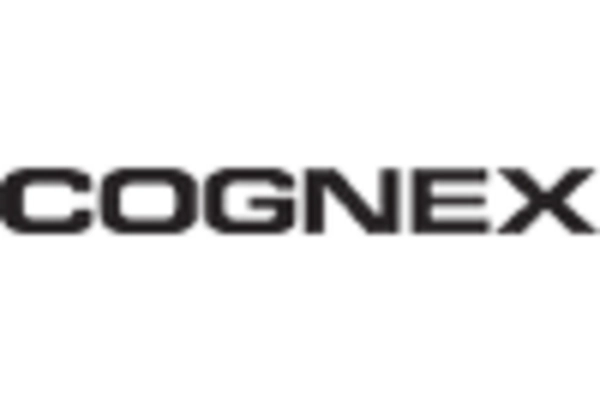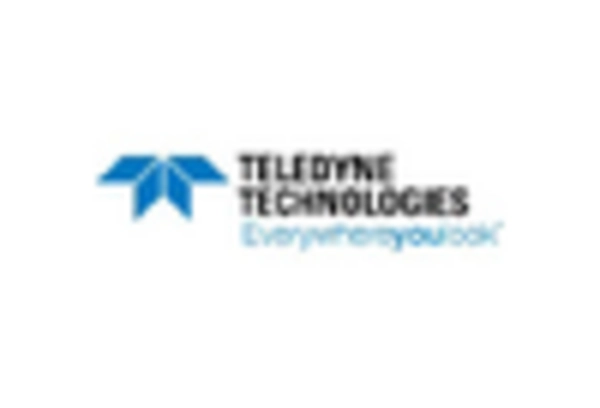Growing Demand for Automation
The increasing demand for automation across various sectors is a primary driver of the robotic vision market. Industries such as manufacturing, logistics, and healthcare are increasingly adopting robotic systems to enhance efficiency and reduce operational costs. In the US, the market for automation technologies is projected to reach approximately $200 billion by 2026, indicating a robust growth trajectory. This trend is likely to propel the adoption of robotic vision systems, which are essential for enabling machines to interpret and respond to visual data. As companies seek to streamline operations and improve productivity, the integration of robotic vision technology becomes crucial, thereby driving the overall growth of the robotic vision market.
Expansion of E-commerce and Logistics
The expansion of e-commerce and logistics sectors is a key driver of the robotic vision market. As online shopping continues to grow, the demand for efficient warehousing and distribution solutions is increasing. Robotic vision systems are being deployed to optimize inventory management, order fulfillment, and shipping processes. In the US, the e-commerce market is projected to surpass $1 trillion by 2025, necessitating advanced automation solutions to handle the rising volume of transactions. This growth is likely to spur investments in robotic vision technologies, as companies seek to enhance operational efficiency and meet customer expectations in a competitive landscape.
Increased Focus on Safety and Quality Control
The heightened focus on safety and quality control in manufacturing and other industries is driving the growth of the robotic vision market. Companies are increasingly utilizing robotic vision systems to ensure compliance with safety standards and to enhance product quality. The ability of these systems to perform real-time inspections and detect defects is invaluable in maintaining high-quality production processes. In the US, the market for quality control solutions is expected to grow by approximately 8% annually, reflecting the increasing importance of quality assurance in manufacturing. This trend underscores the critical role of robotic vision technology in achieving safety and quality objectives.
Rising Investment in Research and Development
Rising investment in research and development (R&D) is a significant driver of the robotic vision market. Companies and research institutions in the US are increasingly allocating resources to develop innovative robotic vision technologies. This investment is aimed at enhancing the capabilities of robotic systems, making them more adaptable and efficient in various applications. According to recent data, R&D spending in the robotics sector is projected to exceed $15 billion by 2025, highlighting the commitment to advancing robotic technologies. As new solutions emerge from these investments, the robotic vision market is likely to experience accelerated growth, driven by the introduction of cutting-edge technologies.
Technological Advancements in Imaging Systems
Technological advancements in imaging systems are significantly influencing the robotic vision market. Innovations in camera technology, such as high-resolution sensors and 3D imaging capabilities, are enhancing the performance of robotic vision systems. These advancements allow robots to perceive their environment with greater accuracy and detail, which is essential for applications in quality control, object recognition, and navigation. The US market for imaging systems is expected to grow at a CAGR of around 10% over the next few years, reflecting the increasing reliance on sophisticated imaging technologies in robotics. Consequently, the continuous evolution of imaging systems is likely to drive the demand for robotic vision solutions.
















Leave a Comment